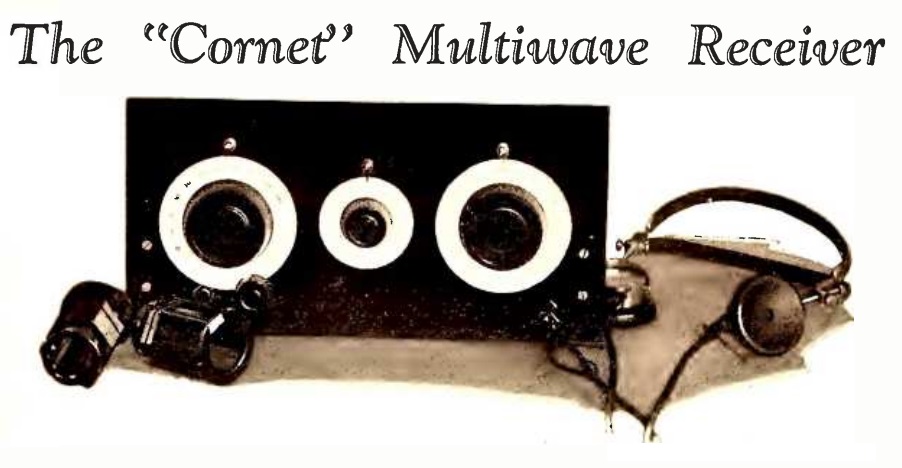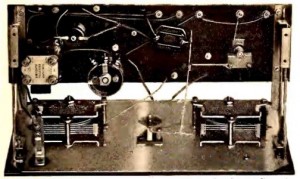 Ninety years ago this month, the June 1928 issue of Radio Broadcast magazine showed how to put together this all band two tube regenerative receiver, designed by Lieut. W.H. Wenstrom of the U.S. Army Signal Corps. The receiver was dubbed the Cornet after a Navy transmitter of the same name which was said to be simple, reliable, accessible, efficient, and flexible.
Ninety years ago this month, the June 1928 issue of Radio Broadcast magazine showed how to put together this all band two tube regenerative receiver, designed by Lieut. W.H. Wenstrom of the U.S. Army Signal Corps. The receiver was dubbed the Cornet after a Navy transmitter of the same name which was said to be simple, reliable, accessible, efficient, and flexible.
 With the use of plug-in coils, the receiver had a very broad tuning range, from 10 to approximately 2000 meters. One of the triodes was used as regenerative detector, with another serving as audio amplifier. Various tubes could be employed, although the 201-A seems to be the author’s choice.
With the use of plug-in coils, the receiver had a very broad tuning range, from 10 to approximately 2000 meters. One of the triodes was used as regenerative detector, with another serving as audio amplifier. Various tubes could be employed, although the 201-A seems to be the author’s choice.
The author acknowledged that pulling in the short waves probably wouldn’t replace standard broadcasting, since the signals were subject to severe fading. But there was a lot to listen to. KDKA and WGY both had shortwave signals carrying their standard program, and the set was able to pull in England, as well as the less powerful PCJJ in Eindhoven, Holland. Weather broadcasts could be heard from NAA in Washington, then transmitting on 24.9, 37.4, and 74.8 meters. The shortwave bands were also full of harmonics of standard broadcast stations, allowing distant signals to be heard.
Amateurs, especially those on expeditions to the Poles, were a good catch, as were transocean flights by both airplanes and dirigibles.

